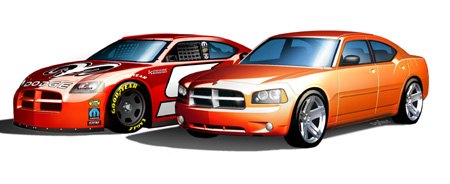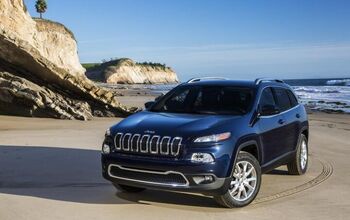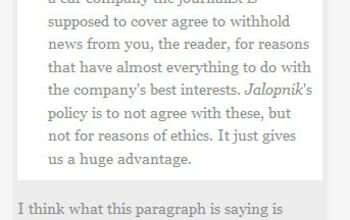Embargo This!
Before you read this editorial, you must first agree not to show it to anyone until next Tuesday. Yeah, right. And yet carmakers routinely provide new product news and photographs to the press subject to a mutually agreed release date. The industry calls the practice a "news embargo". It's the dirty little secret that lies at the heart of the relationship between automakers and the press.
It's easy to understand why automakers love a good embargo: a carefully-timed news blackout is the key to coordinating a vehicle's public debut– from tease to reveal to nationwide campaign. If the general public hears about a new car too early, the thrill of the new strangles the sales of the old. If an upcoming product's particulars arrive too late, valuable marketing momentum is lost. The news embargo significantly decreases the automakers' risk of blowing their big bucks product launches.
By their very nature, the news embargo also limits negative buzz. Think of it this way: if loose lips sink ships, an embargo can help keep a leaky ship afloat. Equally important, the blackout extends to "third parties", so the press can't reveal new model information to outside experts. When the embargo ends and the story breaks, the public receives only the manufacturer's details/photographs (along with a bit of editorially neutral background). Later, well, who cares? The damage has not been done.
Compare the early coverage given the new Dodge Charger with later, less widespread reports chronicling muscle car aficionados' outrage at the new Charger's four-door design. By sitting on Dodge's concept sketches as instructed, the automotive press helped guarantee a positive result for DCX, and a negative one for Charger purists.
Members of the motoring media perpetuate the embargo system because they figure if they don't play ball, they'll be locked out of the ballpark. This justification was brought into sharp focus last December. When embargoed pictures of the new Corvette Z06 suddenly appeared on-line, GM dispatched two Securitas goons to threaten an offending webmaster. Autoweek reported on the intimidation, ran the 'Vette pic, and clarified their position on news embargos: "We won't be the first to break an embargo, but neither will we be the last".
Of course, Autoweek and their ilk realize that the web threatens the status quo– even if dozens of websites responded to GM's threats by pulling the Z06 pictures off-line. While the mainstream automotive press is not about to tell carmakers to stick their news embargos up their figurative tail pipes, they're more than happy to let the newbies chip away at the system. Rest assured: if the new electronic media can get away with embargo running, the old guard will be right behind them; ready, willing and able to capitalize on their competitors' bravery.
Fortunately, the news embargo is under attack from other quarters. These days, scoop hunters like Brenda Priddy and John Johnson prowl the Las Vegas desert and German Nürburgring, capturing photos of future models. The publication of these spy shots, and the increasing use of Photoshop to generate computer models based the images, are positive signs that the automotive PR guys no longer call all the shots. But the corporate communicators are nothing if not resilient. They've responded to the sneak attacks with an advanced embargo technique called the "private press preview".
For example, a few months ago Saturn presented its upcoming models to selected automotive writers. Journalists emerged from the hush-hush happening suitably enthused about the company's new design and engineering direction. But an embargo left the hacks unable to talk about Saturn's future products in any detail– aside from the "happy days are here again" party line.
Although Saturn PR sold the embargoed event as background, it was clearly designed to stem the flood of criticism directed at GM's faltering division. And it worked; the debate about Saturn's tired product range has gone quiet. This despite the fact that there's no guarantee that the previewed cars will make it into production, or that they'll be any good if they do.
Of course, the news embargo only persists because it's a win – win situation for the players involved. The manufacturers get to manipulate the news, while the press knows they'll never be out of the loop. Equally important, by keeping more aggressive journalists away from the master's table, embargos perpetuate and maintain the power of the buff book boys' club.
The only real loser is the general public. News embargos restrict the free flow of timely, unbiased information. They also muddy the journalistic waters, denying interested enthusiasts a vigorously independent automotive press. To rectify the situation, all automotive publications should refuse to agree to any news embargo, no matter how tempting such 'scoop insurance' may be. It's our policy, and it should be theirs.
More by Robert Farago
Latest Car Reviews
Read moreLatest Product Reviews
Read moreRecent Comments
- ToolGuy First picture: I realize that opinions vary on the height of modern trucks, but that entry door on the building is 80 inches tall and hits just below the headlights. Does anyone really believe this is reasonable?Second picture: I do not believe that is a good parking spot to be able to access the bed storage. More specifically, how do you plan to unload topsoil with the truck parked like that? Maybe you kids are taller than me.
- ToolGuy The other day I attempted to check the engine oil in one of my old embarrassing vehicles and I guess the red shop towel I used wasn't genuine Snap-on (lots of counterfeits floating around) plus my driveway isn't completely level and long story short, the engine seized 3 minutes later.No more used cars for me, and nothing but dealer service from here on in (the journalists were right).
- Doughboy Wow, Merc knocks it out of the park with their naming convention… again. /s
- Doughboy I’ve seen car bras before, but never car beards. ZZ Top would be proud.
- Bkojote Allright, actual person who knows trucks here, the article gets it a bit wrong.First off, the Maverick is not at all comparable to a Tacoma just because they're both Hybrids. Or lemme be blunt, the butch-est non-hybrid Maverick Tremor is suitable for 2/10 difficulty trails, a Trailhunter is for about 5/10 or maybe 6/10, just about the upper end of any stock vehicle you're buying from the factory. Aside from a Sasquatch Bronco or Rubicon Jeep Wrangler you're looking at something you're towing back if you want more capability (or perhaps something you /wish/ you were towing back.)Now, where the real world difference should play out is on the trail, where a lot of low speed crawling usually saps efficiency, especially when loaded to the gills. Real world MPG from a 4Runner is about 12-13mpg, So if this loaded-with-overlander-catalog Trailhunter is still pulling in the 20's - or even 18-19, that's a massive improvement.





































Comments
Join the conversation